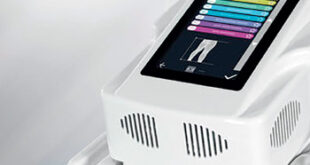By Renee Chillcott, LMHC
 When we think of summer we imagine swimming pools, beach time, picnics, vacations and loads of fun-in-the-sun. Our emotions are happy and carefree. We don’t usually imagine depression or anxiety during the summer months, as we reserve that emotion for the winter.
When we think of summer we imagine swimming pools, beach time, picnics, vacations and loads of fun-in-the-sun. Our emotions are happy and carefree. We don’t usually imagine depression or anxiety during the summer months, as we reserve that emotion for the winter.
So why does summer mean increased depression, anxiety and headaches for me or my loved ones?
The answer is simple….INFLAMMATION. But what exactly is inflammation?
The term for opening of capillaries and increased flow of blood is called vasodilation. Capillaries open and an increase in blood flow occurs in the area. An area of injury may visibly swells up and we describe the area as “swollen” or “inflamed”. In the case of body temperature, “when we are too hot, blood vessels supplying blood to the skin can swell or dilate (vasodilation). This allows more warm blood to flow near the surface of the skin, where the heat can be lost to the air.” After healing or a reduction in body temperature, the capillaries return to normal through a process called vasoconstriction. This process is happening on an almost consistent basis during the summer months when temperatures can reach into the 90’s to 100’s, even in the evenings and early mornings.
If the capillaries do not close or do not close fast enough, we help them along. We apply ice (constricting the capillaries) or take a medication that reduces inflammation (such as ibuprofen) or promotes vasoconstriction (such as caffeine).
But, what happens to our heads if our body temperature rises, we experience vasodilation, but then do not experience vasoconstriction? A headache occurs. This is the result of increased blood flow we can feel through pain receptors covering the brain or scalp.
What if there is increased blood flow in our actual brain? This part of our body does not have pain receptors. Our brain doesn’t technically “feel” pain. The result of increased blood flow in the brain that does not constrict is what we call Brain Inflammation.
What are some causes of vasodilation or increased blood flow in the brain?
- Heat or increased body temperature
- Inflammatory foods such as Gluten or Dairy
- Traumatic Brain/Head injuries
- Concussions
- Viruses such as Lyme
- Medications such as Antibiotics or Anesthesia
- Illness, Sinus irritation or colds/flu
What happens if there is increased blood flow (inflammation) in a part of the body that we cannot see?
After vasodilation or increases in blood flow, the brain, just as with other parts of the body should enter a period of vasoconstriction where blood flow decreases. If this does not happen, the blood flow or swelling remains. Unlike swelling in a wrist or ankle, the swelling that remains in your brain is not easily observed. Our first indication that we have increased blood flow that is not constricting is from symptoms.
Some of the symptoms that result from Brain Inflammation are:
- Depression
- Anxiety or related disorders
- Brain Fog
- Fatigue
- Trouble with memory
- Trouble with concentration
- Trouble with learning
- New allergies or sensitivities to food
- Headaches
- Irritability
- Increased pain
- Insomnia or sleep problems
How do I fix brain inflammation?
Because we cannot see increased blood flow in the brain without special equipment, it can be difficult to know it is happening. As mentioned earlier, there are not pain receptors in the brain so we don’t have pain to indicate swelling or inflammation. Typically, we notice symptoms that do not seem to resolve as an indication that there’s a problem that needs to be fixed. There are medications that can provide some relief. However, when we are prescribing medication based solely off of symptoms, you can easily end up on the wrong medication track and not receive relief. Natural anti-inflammatory supplements can also provide relief as well as an adjustment to diet or change in lifestyle. However we recommend an evaluation and EEG study to confirm the inflammation and then suggest the appropriate treatment options for your situation.
What is an EEG study?
An EEG study or QEEG (Quantitative EEG) is also called a brain map and does just that…it gives us a map of what is going on with the entire brain at one time. We attach electrodes to the whole head, 19 spots, and then record the brain waves with eyes open for 5 minutes and with eyes closed for 10 minutes. This recording is then sent to be read and analyzed. We provide a summary of significant findings and the report shows the result of analyzing the data several different ways. The brain activity is not only compared spot by spot over the entire head, but we can also look at connections, symmetry, how different parts are communicating and all of this data is compared to a database of peers (same sex, handedness and age). It can help us see what areas of the brain have increased blood flow by indicating what areas of the brain have excessive amounts of slower neuron activity (slow neurons promote more blood flow). Another study that can be helpful is the SPECT scan.
How can Neurofeedback help?
Once the areas of inflammation or dysregulation are identified, we use Neurofeedback or EEG Biofeedback to balance the neural patterns and reduce excessive slow activity. Teaching the brain to reduce these waves will help the brain to slow down increases in blood flow and return the brain to a more balanced and flexible state, thus relieving symptoms.
How do I get started?
Getting started is easy, just send us a message. The Brain and Wellness Center staff will answer all of your questions, and help you get scheduled. E-mail or message us today! Brain and Wellness Center, 7301 W. Palmetto Park Rd., Suite 102A, Boca Raton, FL 33433. E-mail us at info@bocabraincenter.com, or text us at (561) 206-2706 or visit our website at www.BocaBrainCenter.com.
Renee Chillcott, LMHC
Renee Chillcott is a Licensed Mental Health Counselor that has been practicing Neurofeedback training since 2005. Renee holds a BA degree from The University of Central Florida and a Master’s Degree in Psychology/Mental Health Counseling from Nova Southeastern University. She is a Licensed Mental Health Counselor and is the owner/operator of The Brain and Wellness Center, located in Boca Raton. At the Brain and Wellness Center, adults, teens, children and families enjoy a variety of services from multiple providers. Neurofeedback, Brain Mapping, SSP, EMDR, Learning Programs, and counseling are among a few of the services offered.
5458 Town Center Road, Suite 13
Boca Raton, FL 33486
(561) 206-2706
www.BocaBrainCenter.com
 South Florida Health and Wellness Magazine Health and Wellness Articles
South Florida Health and Wellness Magazine Health and Wellness Articles




